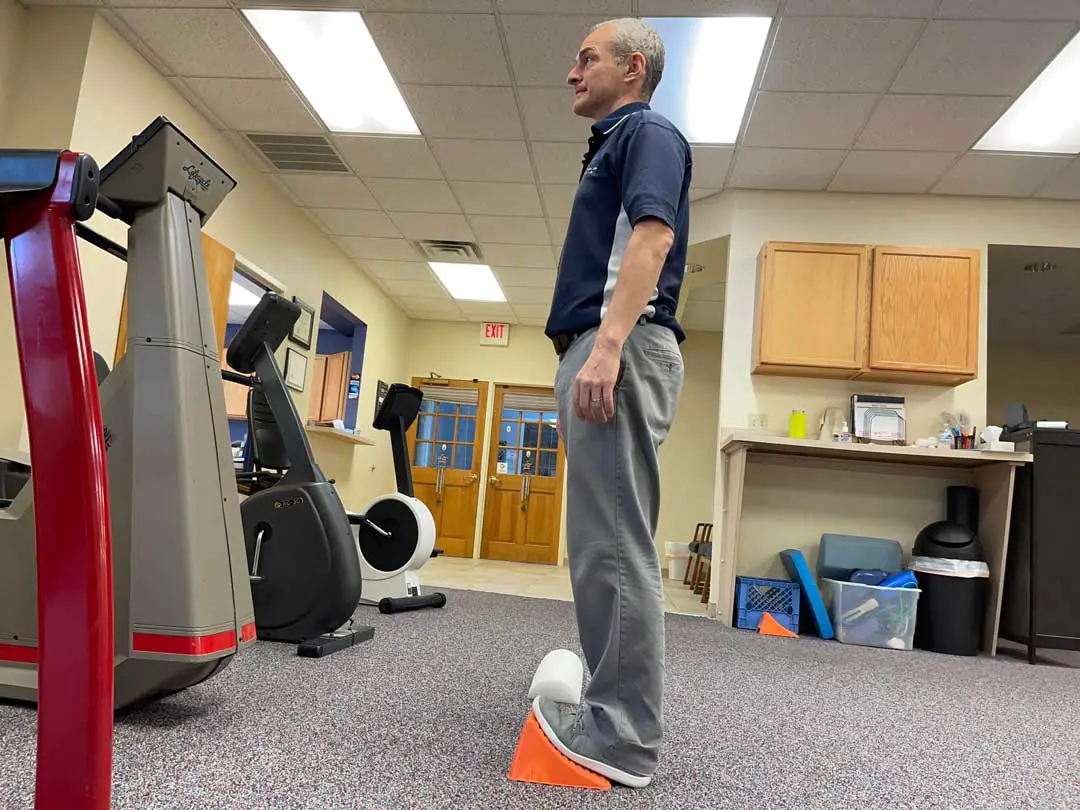Is it safe to play pickleball with plantar fasciitis?
Yes, it is generally considered safe to play pickleball with plantar fasciitis. For most pickleball players the pain associated with this condition goes away once the foot and ankle is appropriately warmed up.
The most common cause of plantar fascia rupture occurred in association with corticosteroid injection, not activity. [1]
How is plantar fasciitis diagnosed?
According to WebMD, Plantar fasciitis is diagnosed based on your subjective report of case history and symptoms in addition to a physical evaluation.
During the physical evaluation your doctor or physical therapist will palpate your ankle, heel, and bottom of the foot. During this palpation there may be tender points along the bottom center of the foot or lower back of the heel.
The most common patient report is:
“My foot doesn’t hurt when I am sitting, but if I sit too long when I stand up the first couple steps are extremely painful. The pain is reduced after I am walking around for a while, but if I walk too much the pain starts to return.”
– Patient with plantar fasciitis
Related Article: 6 Pickleball Footwork Drills
Will playing pickleball make plantar fasciitis worse?
Depending on the cause of plantar fasciitis, playing racket sports like pickleball is not strongly associated with the exacerbation of this condition.
If a pickleball player played for an extended match, there may be an increase in pain and symptoms the next day, but this would resolve back to baseline within 48-hours.
What causes plantar fasciitis?
Plantar fasciitis is a pathology of the connective tissue. It may be caused by mechanical damage to the plantar fascia structure, chemical changes in the surrounding tissue, overuse and degenerative changes over time, or several other causes.
When I am initially evaluating a new patient for plantar fasciitis I ask the following questions:
- What has changed in your daily activities since your symptoms began?
- When was the last time you had blood work?
- Have you blood sugars been elevated?
- Has your body temperature been elevated?
- Have you had recent changes in sleep?
- Have you had any other recent joint pain or injuries?
The reason for these questions is to dig deeper into possible chemical changes, immune problems, or mechanical stressors that may be contributing to the problem.
Treatments for plantar fasciitis?
In my opinion, plantar fasciitis is a healing deficit more than an overuse injury. Here is a list of the most common treatments for plantar fasciitis.
- Lifestyle modifications
- Kinesiology taping
- Night splints
- Walking boot
- Orthotics
- New Shoes (see also ‘Best Men’s Pickleball Shoes‘)
- Eccentric loading program
- Surgery
To watch the video on YouTube click here: https://youtu.be/4mTZVkAnvnU
Home Massage Treatment for Plantar Fasciitis
Step 1 – Cross Fiber Massage for Plantar Fasciitis
Using your thumb, apply pressure to the plantar fascia starting at the center of the heel bone under your foot and working in a crisscross pattern toward the arch of your foot.
Step 2 – Two Minutes of Massage
While there is no hard and fast rules about how long a cross fiber massage should last, I have found that spending approximately 2 minutes on each plantar fascia is enough to elicit a positive change as evidenced by less pain and improved function.
More than 2 minutes does not seem to produce any significant improvement beyond what is achieved in the first two minutes.
Step 3 – Cryotherapy
If you like the sensation of cold, then using an ice cube or frozen roller for a brief ice massage might help reduce pain and improve function.
Cryotherapy or icing an injury provides little true clinical benefit to the tissue, but subjectively patients will report icing a painful area helps reduce the experience of pain which allows them to move more freely.
Home Stretching Program
If you would like to utilize a stretching program to treat your plantar fasciitis at home, I highly recommend purchasing these tire chocks from Amazon.
We use these FloTool 11930MI Heavy Duty Wheel Chock in my clinic for stretching the plantar fascia while performing a classic calf stretch.
By placing your foot at the top of the wedge and allowing your heel to rest of the floor the concave shape of the wedge allows the plantar fascia to stretch while the wedge places the ankle in a dorsiflexed position.
I often recommend a longer duration stretch of 60 seconds repeated 3 times on each foot to allow the connective tissue time to lengthen appropriately.

References:
1. Acevedo JI, Beskin JL. Complications of plantar fascia rupture associated with corticosteroid injection. Foot Ankle Int. 1998 Feb;19(2):91-7. doi: 10.1177/107110079801900207. PMID: 9498581.


